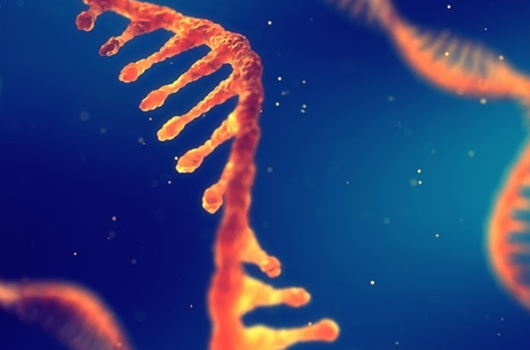For the last several decades, progress in RNA investigations revealed earlier underestimated importance of RNA in normal and abnormal cellular processes. It is now clear that regulation of translation and transcription, protein and enzyme functions that have commonly been attributed to proteins are frequently in RNAs' competency.
The multitude of recent research articles devoted to the wide variety of diseases, including viral and bacterial infections, cancer and degenerative processes, emphasized the high potential of approaches targeted on the structure of particular RNA.
RNA chains have an entirely specific shape defined by primary and secondary structures, such as double helix, stem-loop structures, pseudoknots, etc. Therefore, they could form appropriate binding sites for candidate ligands. Thus it is possible, for example, to perform docking procedures that became common for the RNA-directed drug design. In addition to this, a wide variety of experimental data on the therapeutic effect of different RNA-targeting agents is available in open access that allows employing of ligand-based approaches to design RNA targeted libraries.
Reaxense’s new RNA Targeted Library (RNATL) is designed using the information about known RNA-focused ligands. The screening procedure we used implied machine learning based on the reference set of RNA ligands using Extended-Connectivity-Fingerprints. To reduce false-positive hits and increase the selected compounds' accuracy, we calculated optimal values of standard molecular descriptors such as LogP, MW, HBD, HBA, TPSA, number of rotatable bonds, number of rings, etc. The RNATL contains drug-like compounds only. All selected RNATL candidates match structural features required to reveal RNA-targeted activity, i.e., contain necessary molecular fragments with corresponding orientation, have appropriate physicochemical properties, low toxicity, etc. to fit potential RNA binding cavities.
The RNATL contains over 2,500 drug-like compounds and is intended for screening in research projects related to the regulation of translation and transcription processes, design of efficient antiviral, antibacterial, and anticancer drugs. It is available for immediate shipping as 10mM DMSO solutions. This library could also be conveniently formatted in any 96- or 384-well plates.
Features
- 2,500+ compounds with potential RNA binding ability
- High diversity over the library
- Lipinski's rule of five compliant
- Prompt delivery as 10mM DMSO solutions
- Can be formatted in any 96- or 384-well plates
- Purity >90%; spectral data available
- No pan-assay interference (PAINS) compounds
- Compounds with reactive and toxic groups filtered out

